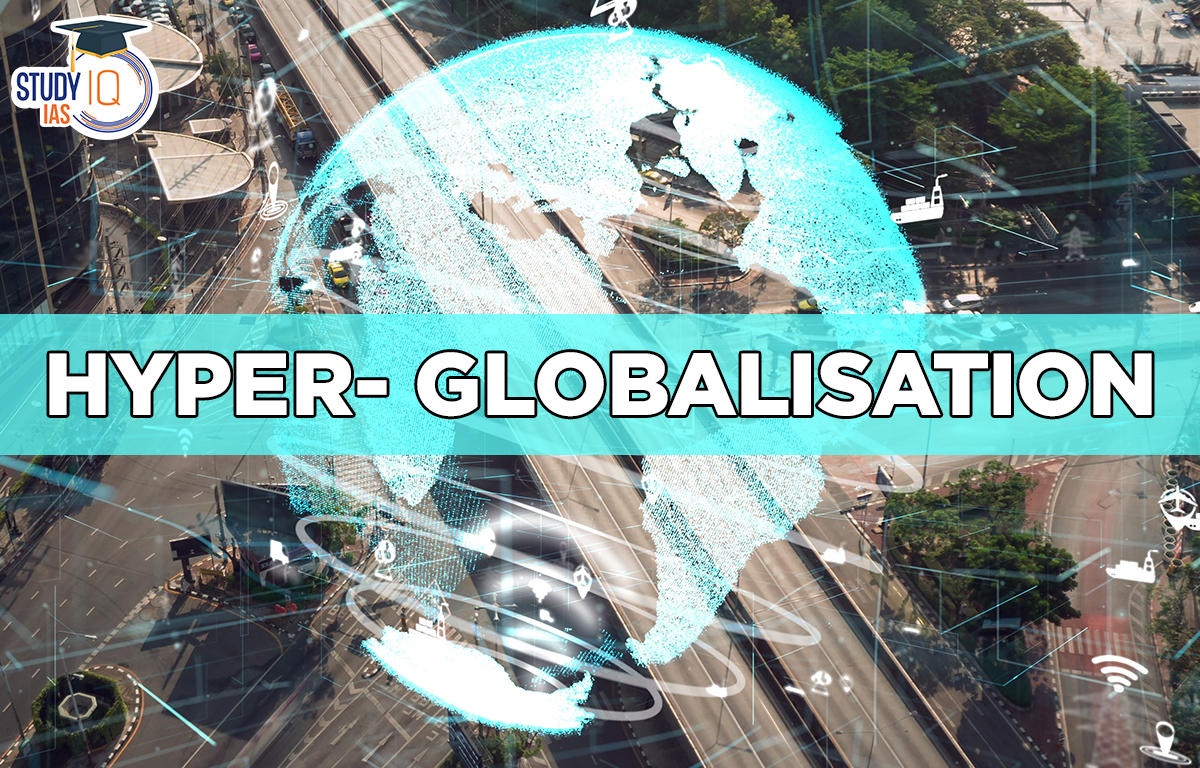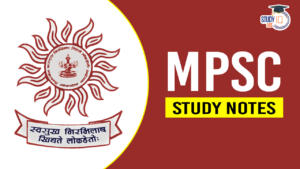Table of Contents
About Hyper Globalisation
- Hyper Globalisation is the concept that believes that globalisation is happening and there is an emergence of a homogenous global culture.
- In a hyper-globalised world, countries produce things in which they have comparative advantage and import those others can make at lower opportunity cost.

- For example, Indonesia and Malaysia produce palm oil; and Ukraine and Russia produce sunflower oil.
- They have comparative advantages in the palm oil and sunflower oil. Therefore, Indonesia alone is the largest exporter of palm oil.
Difference between Globalization & Hyper-Globalisation
- International Monitory Fund defines Globalization as a means that world trade and financial markets are becoming more integrated.
- Hyper-globalisation is used to describe the dramatic increase in international trade witnessed for about a decade and a half from the early 1990s.
- It led to an unprecedented movement of capital and of people.
- The main difference is rate of speed at which the process of globalisation takes place.
- Period between 1870 and 1914 is the Golden Age of globalization in which world trade in terms of gross domestic product went from a 9 percent to 16 percent share.
- In the current age of hyper-globalization, which includes both goods and services, the gross domestic product share has reached 33 percent.
Philosophical Base of Hyper-Globalisation
- French philosopher Montesquieu said that “commerce is a cure for the most destructive prejudices” and “peace is the natural effect of trade”.
- Duox Commerce takes inspiration from Montesquieu, in propounding that trade makes men less prone to violence or irrational behaviour.
- Adam Smith in his Wealth of Nations: “If a foreign country can supply us with a commodity cheaper than we ourselves can make it, better buy it of them with some part of the produce of our own industry, employed in a way in which we have some advantage”.
- Norman Angell book titled ‘The Great Illusion in 1910’, argued that war in the modern era was an “economic impossibility”.
- The sheer extent of financial and commercial interdependence between countries made conflict as futile for the conqueror as the conquered.
- However, On 28 July 1914, World War-I broke out and ended the first “golden age” of globalisation between 1870 and 1914, when world trade in goods surged from 9% to 16% of GDP.
- Thomas L Friedman in 1996, wrote in The New York Times that “no two countries that both have a McDonald’s have ever fought a war against each other”.
- Between 1990 and 2008, global trade in goods soared from 15.3% to 25.2% of world GDP. Inclusive of trade in services, the increase was from 18.8% to 31.7%.
- Example: Russia supplying close to 40% of the European Union’s total natural gas consumption in 2021;
- Apple having its biggest iPhone factory in China’s Zhengzhou (operated by a Taiwanese contract manufacturer Foxconn);
- Taiwanese companies producing 65% of the world’s semiconductors;
- India grabbing a 30% share of the global IT services market;
- Bangladesh exporting readymade garments valued at almost $43 billion last year.
- However, Hyperglobalization era formally ended in 2022, with:
- Russian’s invasion of Ukraine.
- Economic war: A geopolitical confrontation between two superpowers, viz, USA and China.
Reasons for Failure of Hyper-Globalisation
- Hyper-globalization exacerbated distributional problems in many economies. It extended tension between the gains from specialization and the gains from productive diversification.
- Example: Gains from trade was the redistribution of income from its losers to its winners.
- And as globalization deepened, redistribution from losers to winners grew ever larger relative to the net gains.
- Hyper-globalization undermined the accountability of public officials to their electorates.
- Neglect of Strategic Autonomy: The zero-sum logic of national security and geopolitical competition was antithetical to the positive-sum logic of international economic cooperation.
- Example: With China’s rise as a geopolitical rival to the United States, and Russia’s invasion of Ukraine, strategic competition has reasserted itself over economics.
- Perception of Global Supremacy: USA tends to regard American predominance in global affairs as the natural state of affairs.
- Delayed Diagnosis: Hyper-globalization had been in retreat since the global financial crisis of 2007-08.
- The share of trade in world GDP began to decline after 2007, as China’s export-to-GDP ratio plummeted by a remarkable 16 percentage points.
- Populist politicians openly hostile to globalization became much more influential in the advanced economies.
Way Forward
- Yet, it is possible to envisage a good scenario whereby we achieve a better balance between the prerogatives of the nation-state and the requirements of an open economy.
- Such a rebalancing might enable inclusive prosperity at home and peace and security abroad.
- Policymakers to mend the damage done to economies and societies by hyper-globalization, along with other market-first policies.
- It will require reviving the spirit of the Bretton Woods era, when the global economy served domestic economic and social goals – full employment, prosperity, and equity.
- Shared prosperity makes societies more secure and more likely to countenance openness to the world.
- Countries to not turn a legitimate quest for national security into aggression against others.
- Russia may have had reasonable concerns about NATO enlargement, but its war in Ukraine is a completely disproportionate response that will likely leave Russia less secure and less prosperous in the long run.
- Acknowledging multi-polarity and abandoning the quest for global supremacy.


 MPSC Study Notes and Important Books
MPSC Study Notes and Important Books
 Rajasthan Judiciary Registration Process...
Rajasthan Judiciary Registration Process...
 How to Prepare for UPSC in 6 Months?
How to Prepare for UPSC in 6 Months?

















